Job application reference letter template
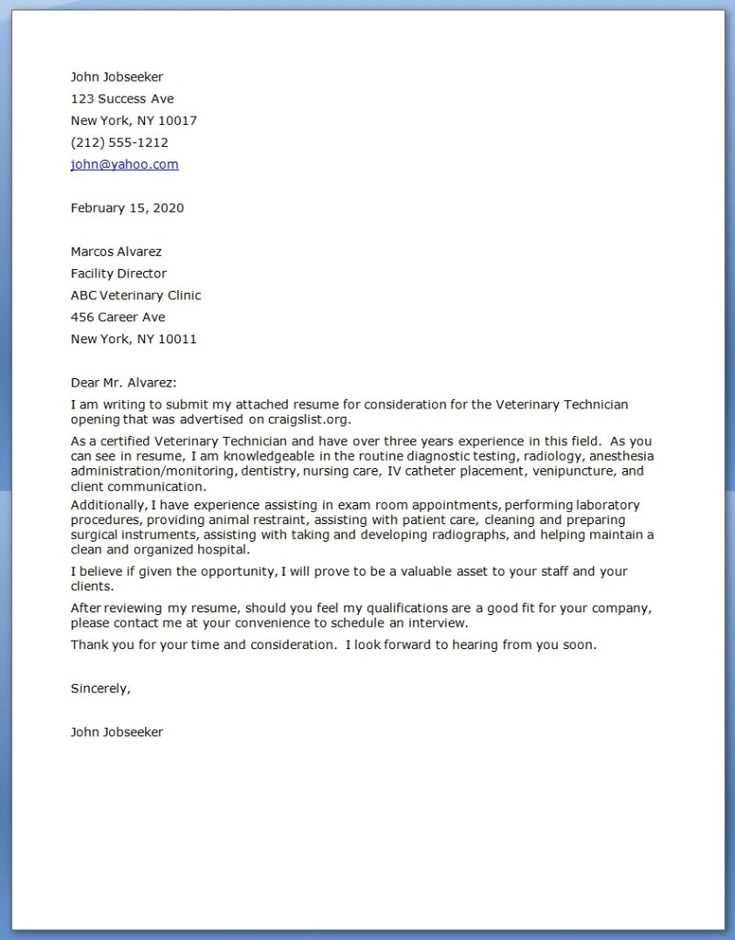
A job application reference letter can make a significant difference in an applicant’s chances of landing a position. By providing a detailed and accurate account of the candidate’s qualifications, work ethic, and personal strengths, a well-crafted reference letter can help highlight their suitability for the role. Use the following template to ensure your letter effectively presents the applicant’s skills and experiences.
The reference letter should start by clearly stating your relationship with the candidate. Mention how long you’ve known them and in what capacity you’ve worked together. This gives the reader context for your evaluation. Be specific about the applicant’s role and the tasks they handled, focusing on their achievements and how they stood out. The more concrete examples you provide, the better the letter will resonate with potential employers.
Next, address the candidate’s professional traits. Focus on the key qualities that make them an asset in the workplace, such as their problem-solving abilities, teamwork skills, and reliability. Avoid general statements and instead highlight instances where the applicant demonstrated these traits. This allows the letter to stand out and gives the employer a clear picture of what they can expect from the candidate.
End the letter with a strong recommendation. Let the employer know that you genuinely support the applicant’s candidacy and believe they will excel in the role. You may also provide your contact information for follow-up questions. A confident, positive conclusion ensures the reader understands your endorsement and reinforces the strength of the candidate’s qualifications.
Here are the corrected lines:
Be direct and clear when stating the relationship with the applicant. Mention how long you’ve known them and in what capacity. For example:
Correct Example:
“I have had the pleasure of working with John Doe for the past three years as his supervisor at XYZ Corporation.”
Avoid using vague or generalized terms. Specify the applicant’s strengths and achievements that are relevant to the job they’re applying for. This will give your reference more impact:
Correct Example:
“John consistently exceeded sales targets by 20% and played a key role in expanding our client base.”
Make sure to highlight the applicant’s skills that align with the job requirements. Keep it relevant and concise:
Correct Example:
“His expertise in project management and his ability to collaborate effectively with cross-functional teams makes him a strong candidate for the role.”
Conclude by reaffirming your recommendation and offering to provide further information if necessary:
Correct Example:
“I highly recommend John for this position. Please feel free to contact me at [your contact information] if you have any further questions.”
- Job Application Reference Letter Template
A well-written reference letter can greatly impact a job application. Below is a practical job application reference letter template designed for a straightforward approach while highlighting the candidate’s strengths.
Template:
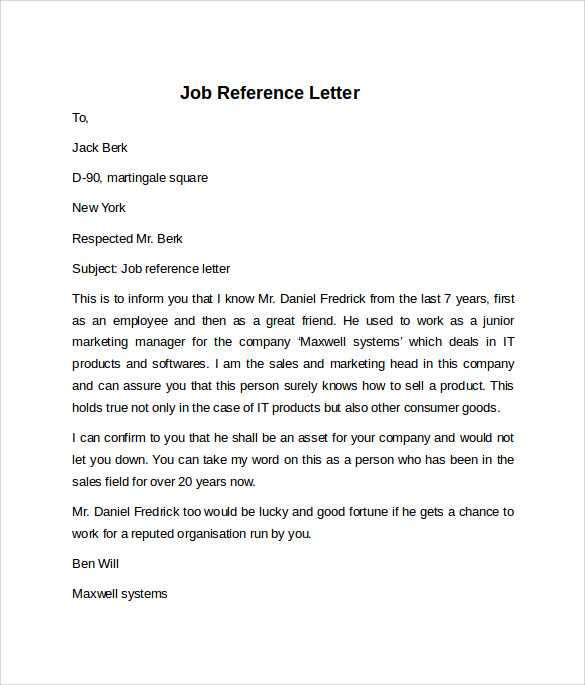
[Your Name]
[Your Job Title]
[Your Company/Organization Name]
[Your Address]
[City, State, ZIP Code]
[Email Address]
[Phone Number]
[Date]
[Hiring Manager’s Name]
[Company Name]
[Company Address]
[City, State, ZIP Code]
Dear [Hiring Manager’s Name],
I am writing to recommend [Applicant’s Full Name] for the [Position Name] at your company. I had the pleasure of working with [Applicant’s Name] for [duration of time] at [Your Company Name], where [he/she/they] served as [Applicant’s Job Title].
During [his/her/their] time with us, [Applicant’s Name] demonstrated exceptional skills in [mention relevant skills]. [He/She/They] consistently went above and beyond in completing tasks related to [specific examples of job responsibilities]. [His/Her/Their] strong communication, teamwork, and problem-solving abilities made [him/her/them] an invaluable member of our team.
One particular instance that stands out is when [describe a specific example that highlights the applicant’s strengths]. This demonstrated [his/her/their] ability to [describe specific skills or qualities like leadership, initiative, or technical knowledge].
I am confident that [Applicant’s Name] will bring the same level of dedication, competence, and enthusiasm to your team. [He/She/They] would be an excellent addition to [Company Name]. Please feel free to contact me at [Your Phone Number] or [Your Email Address] if you require any further information.
Sincerely,
[Your Name]
Tips for Personalizing the Template:
- Ensure to highlight specific accomplishments or attributes that set the candidate apart.
- Use concrete examples to demonstrate their skills and work ethic.
- Customize the tone based on your relationship with the applicant and the job they’re applying for.
- Be honest and specific, avoiding generic or overly vague statements.
Begin by addressing the letter to the specific person who will be reviewing your application. Avoid generic salutations like “To whom it may concern.” Look up the hiring manager’s name or use their job title if unavailable. Start with a brief introduction, stating the position you’re applying for and where you found the job listing.
Introduction
In the opening paragraph, clearly mention the job title and express your enthusiasm for the role. Mention any direct connection to the company, such as referrals or shared connections, to build immediate relevance.
Main Body
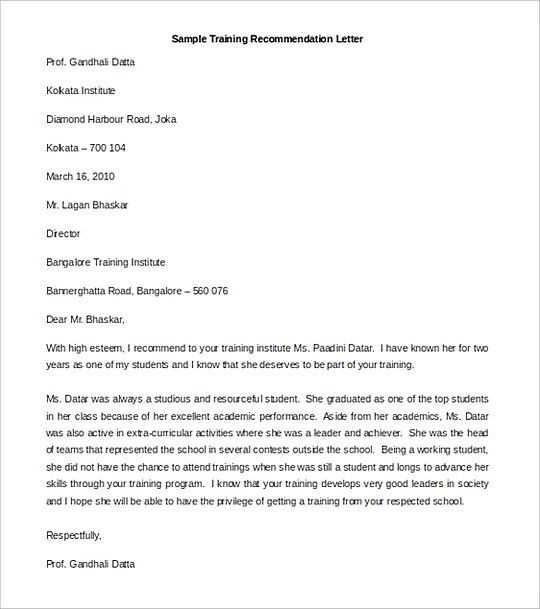
The next section should highlight your skills and experience that directly relate to the job. Focus on a few key achievements that demonstrate your qualifications. Be concise but specific, showing how your background makes you an ideal candidate. Use bullet points to break down important details and make your qualifications stand out.
For example, if applying for a marketing role, mention your ability to manage campaigns or work with social media tools. Include metrics or results where possible to back up your claims.
Conclusion
End the letter by thanking the employer for considering your application. Express your eagerness for an interview and provide your contact information. Reaffirm your enthusiasm for the opportunity and close with a polite, professional sign-off like “Sincerely” or “Best regards.”
Keep the letter to one page, ensuring it’s well-organized and free of errors. Personalize it to the company and role, making a strong case for why you’re a great fit.
A job reference letter should include specific details that help highlight the candidate’s strengths and suitability for the role. Here’s what you should include:
1. Candidate’s Background and Role
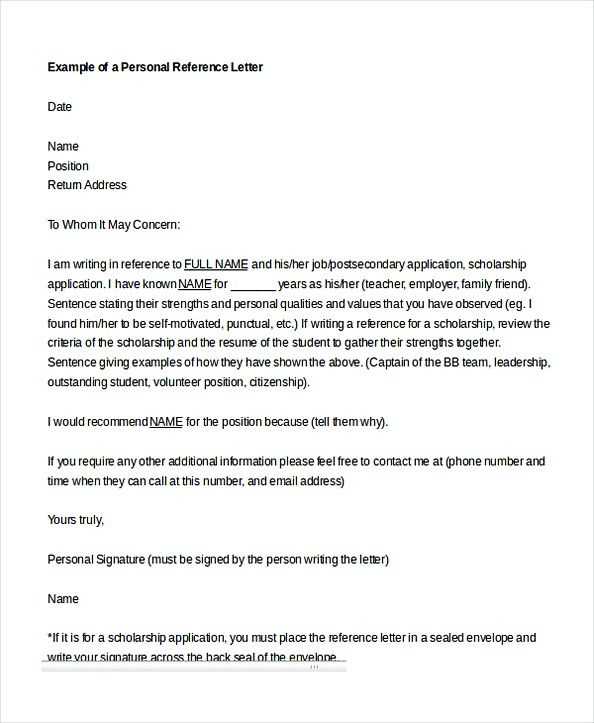
Clearly state the candidate’s full name, the position they held, and how long you’ve known them. Mention your professional relationship with the candidate, explaining how you worked together, whether directly or in a supervisory role.
2. Key Skills and Strengths
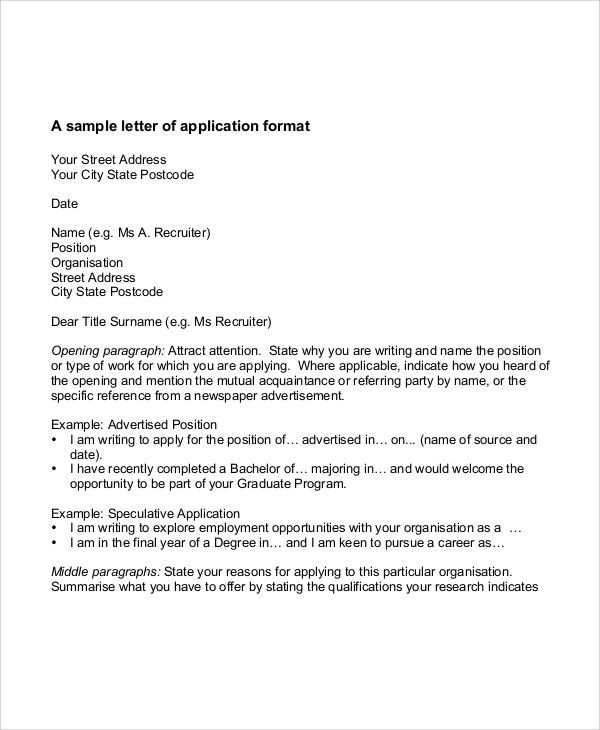
Focus on the candidate’s relevant skills that align with the position they are applying for. Be specific–mention their communication abilities, problem-solving skills, leadership qualities, and technical expertise. Use concrete examples that demonstrate their impact in the workplace.
3. Achievements and Contributions
Highlight specific accomplishments that show the candidate’s value. This could include projects they led, goals they exceeded, or improvements they made. Make sure to show how these achievements are relevant to the job they are seeking.
4. Personal Qualities
Don’t forget to mention the candidate’s personal qualities. Traits like reliability, dedication, and the ability to work well with others give employers a sense of how the person fits into a team and contributes to the company’s culture.
5. Your Endorsement
Finish the letter by clearly recommending the candidate for the job. This final statement should be strong, expressing your confidence in their abilities and your belief that they will succeed in the role.
Each element you include adds weight to the recommendation and ensures the letter provides the hiring team with a full, accurate picture of the candidate’s qualifications.
The tone of your reference letter should match the relationship you have with the applicant. If you’re writing for a colleague you worked closely with, aim for a warm, approachable tone that highlights their strengths. For a more formal reference, such as for a manager or executive, keep the tone respectful and professional, using precise language to reflect the applicant’s skills and work ethic.
Consider the industry the applicant is applying to. In creative fields, such as design or marketing, you can afford to be slightly more relaxed and conversational, while in technical or corporate settings, stick to a polished and direct approach. Tailor the language to resonate with the values and expectations of the target role.
Here’s a quick guide to choosing your tone:
| Type of Applicant | Recommended Tone | Key Characteristics |
|---|---|---|
| Close colleague | Warm and supportive | Friendly, personal, specific examples |
| Executive or senior role | Formal and respectful | Clear, concise, respectful, professional language |
| Creative roles (e.g., design, marketing) | Casual yet professional | Conversational, showcasing creativity, enthusiasm |
| Technical or corporate role | Professional and focused | Direct, objective, highlighting problem-solving skills |
By aligning the tone with the role and your relationship to the applicant, you ensure the letter is both effective and appropriate for the context. This creates a stronger recommendation that resonates with the reader. Always remember to adjust your approach based on the applicant’s personality and the industry standards they are entering.
Begin by researching the job description and identifying key skills and qualifications. Tailor your reference letter to highlight the candidate’s experiences that directly align with the role. Mention specific achievements that demonstrate their ability to succeed in the job’s unique environment.
Incorporate details about the candidate’s past responsibilities that relate to the duties of the position. If the job emphasizes leadership or teamwork, focus on instances where the candidate excelled in these areas. Be specific about how their past performance mirrors the tasks they will face in the new role.
Refer to the company’s values or culture, if possible, and explain how the candidate embodies these traits. Personalizing the reference with specific examples of how the candidate’s values align with the company’s mission shows that you’ve researched the employer’s needs.
Conclude by expressing your confidence in the candidate’s ability to thrive in the position. A direct connection between their skills and the job will make your reference letter stand out and offer real insight into their potential fit for the role.
Avoid using vague language or generic phrases. Make sure the letter is specific, with clear examples that highlight the applicant’s strengths.
- Being too vague: Avoid generalities like “great worker” without supporting examples. Specific achievements and skills make a stronger impact.
- Not customizing the letter: Generic references to a candidate without tailoring it to the job or the company can come off as impersonal. Personalize it for each application.
- Overloading with information: Stick to the most relevant skills and experiences. Too much detail can distract from the key points you want to convey.
- Focusing too much on weaknesses: While it’s important to be honest, highlighting weaknesses can overshadow the positive aspects. Focus on strengths and how they’ll benefit the new role.
- Making spelling or grammar errors: Proofread the letter to ensure there are no mistakes. A letter full of errors gives a poor impression of both you and the applicant.
Additional Tips:
- Stay positive and confident about the candidate.
- Make sure the tone is professional, but approachable.
- Keep the letter concise and to the point–ideally, no longer than one page.
Reach out within a week of sending the reference letter to check on the progress. Keep the tone polite and professional while expressing your interest in the outcome. A short, courteous email is usually enough. If you don’t get a response after your initial follow-up, wait another 7-10 days before sending a second reminder. Keep it brief and professional–avoid sounding impatient or demanding.
1. Craft a Clear and Polite Follow-Up Email
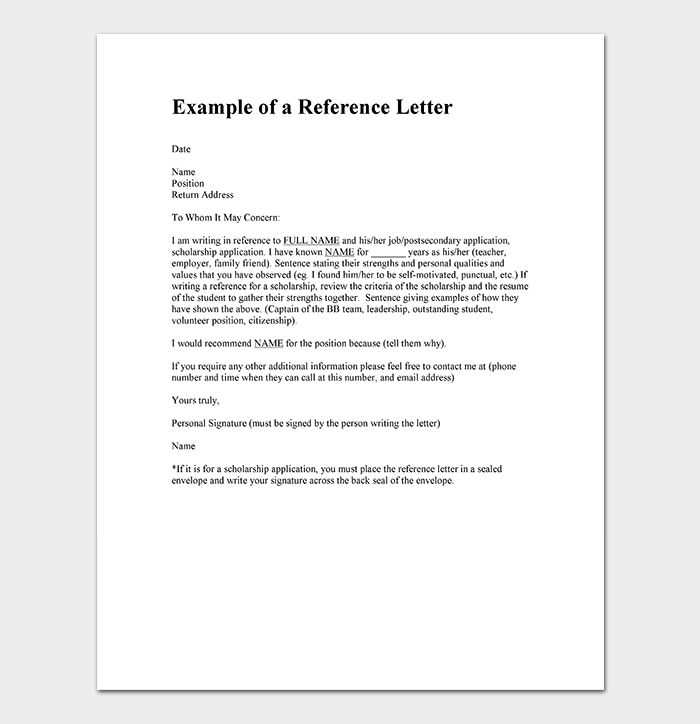
When following up, include the reference letter’s submission details (such as date and recipient) and ask if any further information is needed. Acknowledge the recipient’s busy schedule and express your willingness to assist if necessary.
2. Avoid Over-Following Up
It’s crucial not to send multiple follow-ups in a short time frame. If after your second follow-up you still haven’t heard anything, consider moving on. If they’re interested in your reference letter, they will reach out.
Crafting a Job Application Reference Letter
Include a clear introduction, stating the relationship to the applicant. Specify the duration and context in which you have worked with them.
Provide a description of the applicant’s key strengths. Focus on skills relevant to the job they are applying for, using concrete examples to illustrate their qualifications.
Highlight any notable achievements or projects the applicant was involved in. Be specific and avoid generalities; showcase their impact on your team or organization.
Offer a professional evaluation of their work ethic and character. Mention traits such as reliability, teamwork, and problem-solving abilities that would be beneficial for the prospective employer.
End the letter with a strong recommendation. State clearly that you support the candidate’s application and encourage the reader to contact you for more details if needed.
Sign the letter with your full name, position, and contact information, ensuring the reader can easily follow up with you for additional insight into the applicant’s qualifications.